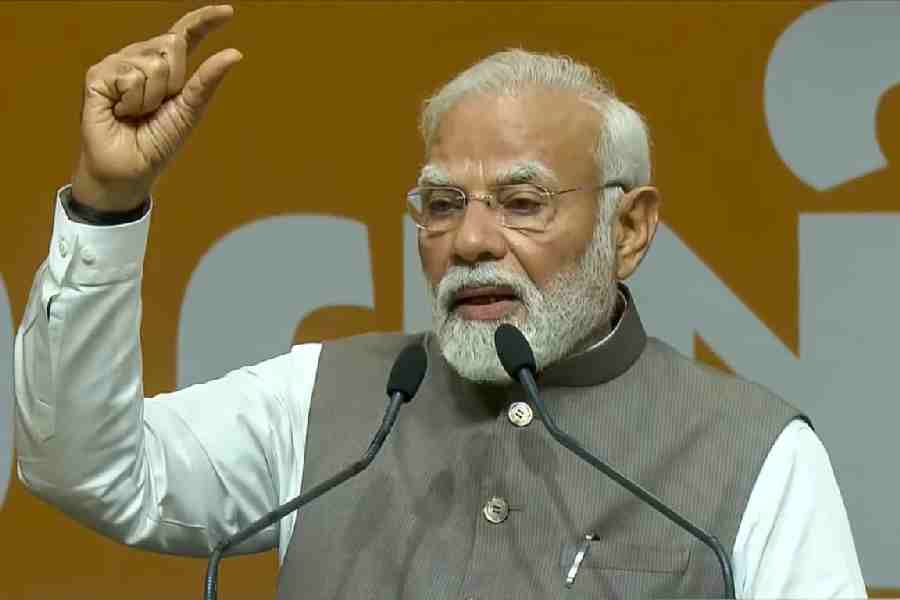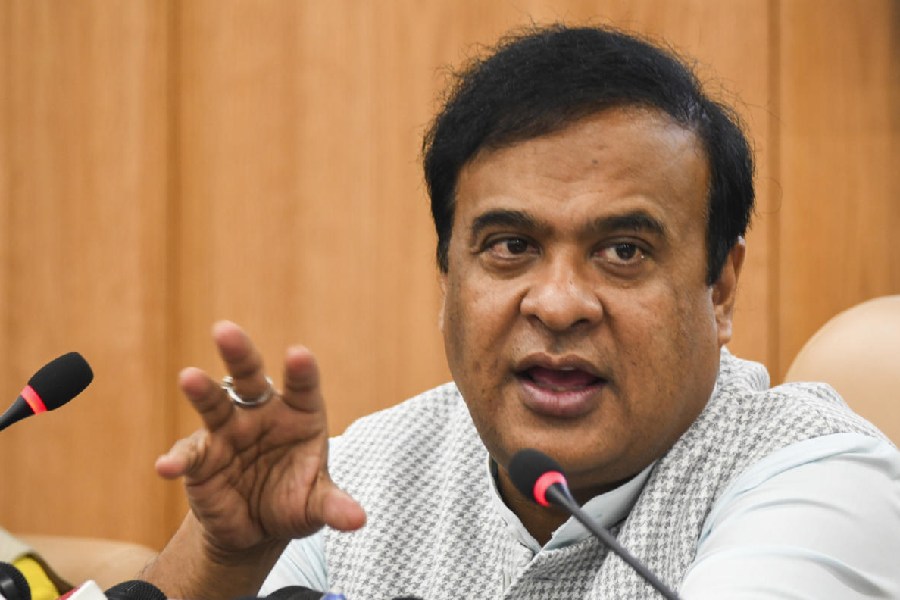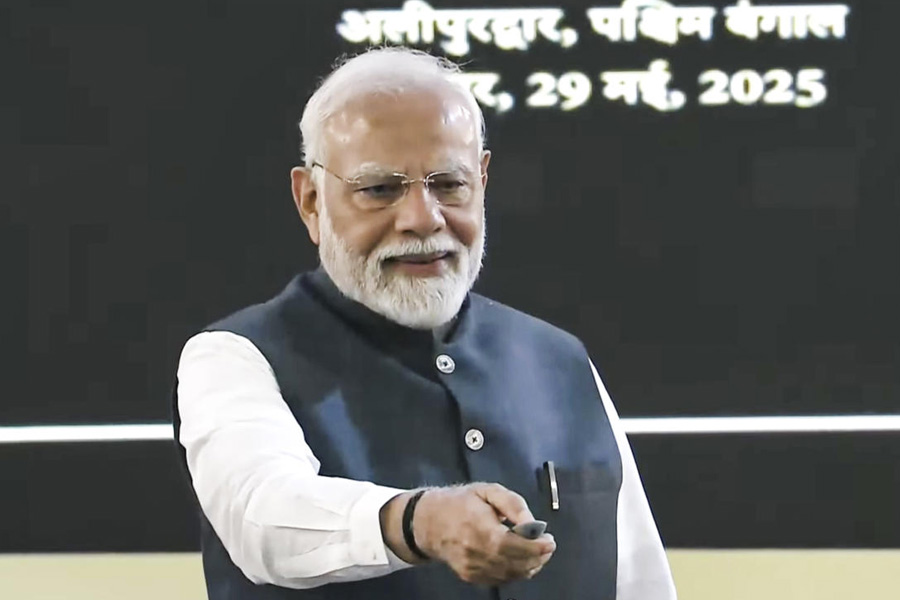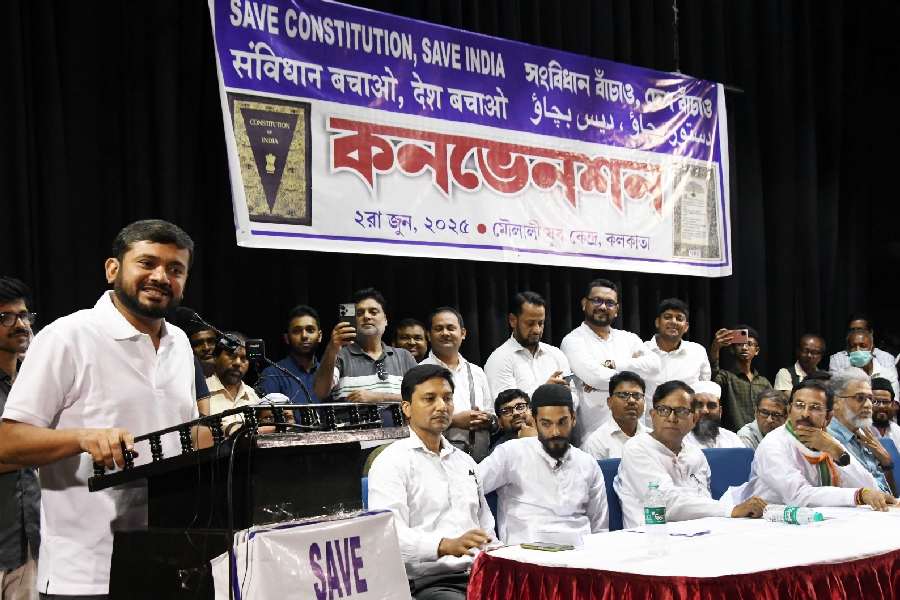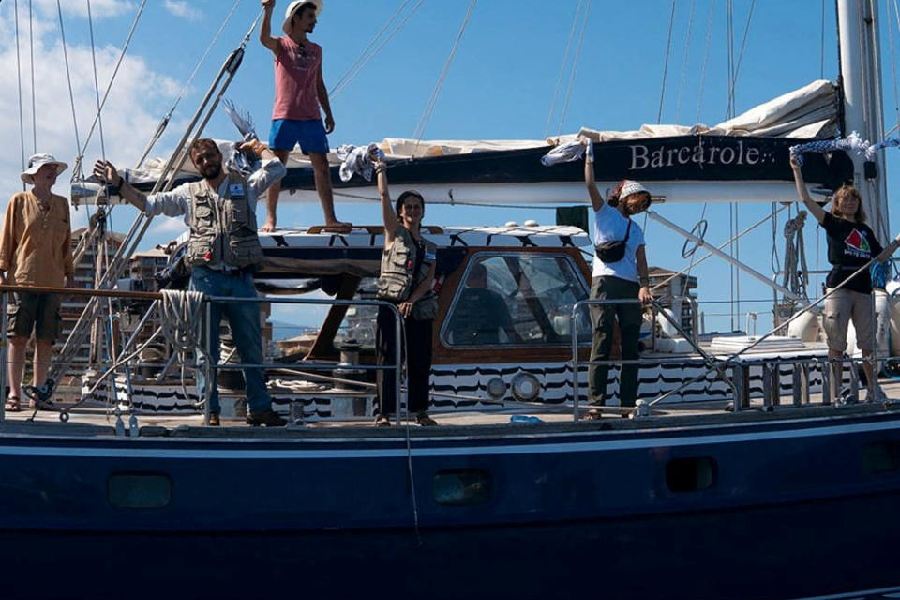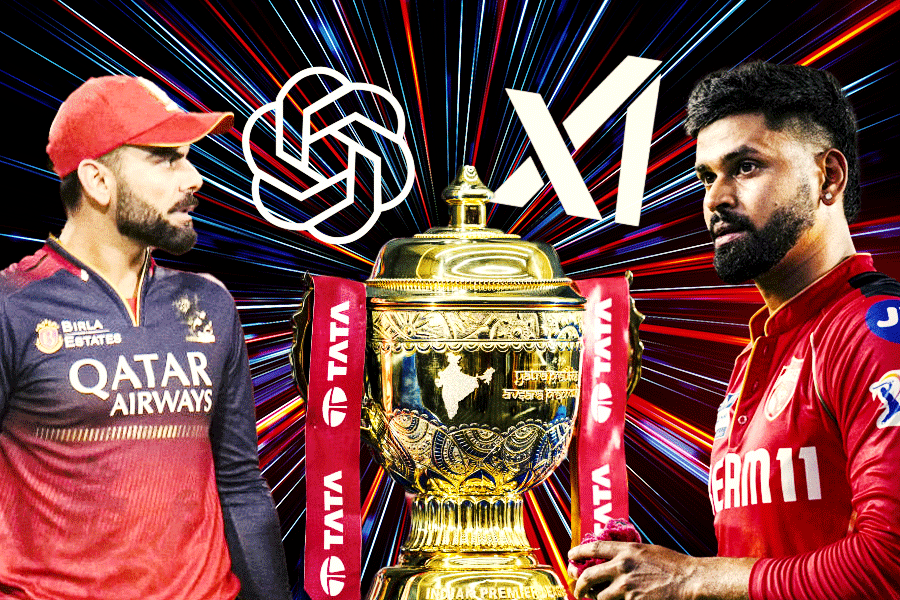 |
George Brooks
He is the founder of many Indian fusion groups, including Summit with Fareed Haque, Kai Eckhardt, Zakir Hussain and Steve Smith, Bombay Jazz with Larry Coryell and Ronu Majumdar and the Kirwani Quartet with Gwyneth Wentink and Hariprasad Chaurasia. Over to George Brooks.
What motivated you to start all these different groups?
Each of the groups you mention comprises a unique combination of players and personalities and offers me the opportunity to express a different aspect of the music. Summit developed from my early recordings for Zakir Hussain’s Moment Records and has incorporated guest appearances by Krishna Bhatt, Sultan Khan, Aashish Khan and Niladri Kumar. We even did a few live performances with Hariprasad Chaurasia. Summit maintains a jazz perspective with strong Indian influences. The current configuration of Summit offers new musical perspectives from Cuban drummer Dafnis Prieto and Egyptian keyboardist Osam Ezzeldin.
The music I have made with Hari ji has focused on the classical side of “fusion”. He is a master and it is important that his classical mastery is kept in focus. I have also formed a new trio called Elements with Dutch harpist Gwyneth Wentink and violinist Kala Ramnath. Elements explores the European classical approach to music unifying it with the Indian classical and jazz aesthetics.
Bombay Jazz has yet a different flavour. Larry Coryell and I share a background in the blues and a taste for exploring uncharted territory. Ronu is a willing and very able accomplice with great ears and technical facility. I also started the Raga Bop Trio with Steve Smith and Prasanna, opening up new possibilities with a decidedly Carnatic jazz-rock flavour. The key is that as artistes we like to grow and explore. This keeps the music fresh.
With so many fusion bands around, how have you been able to sustain for such a long time?
Hard work, great collaborators and good luck have a lot to do with it. We also have to be increasingly creative in our search for financial support. For this India trip we were fortunate to get support from the Mid-Atlantic USArtists touring programme.
What did you take away from recording and playing with Zakir Hussain?
Observing Zakir has taught me that a musician cannot be an innovator without maintaining deep roots and a firm foundation in one’s own tradition. He has also encouraged me to stay true to my artistic vision and not chase success based on musical trends or fashions.
You have played with artistes like Etta James, Albert Collins and Yo-Yo Ma...
I haven’t performed with Yo-Yo Ma, I wrote music for him in collaboration with Zakir Hussain. As you might imagine it was a thrill to hear the music come to life with his magical touch. I toured with Etta and wrote arrangements for her as well. Etta was a great performer and I learned a lot observing how she would handle her audiences and her bands. When you work with artistes like Etta or Albert Collins or the Temptations or Hari ji for that matter you are offered a window into the history of the music and you feel connected to the lineage. It is very powerful and humbling.
I believe that great music is nourished by personal relationships. These close personal relations elevate the music and it is something that audiences can feel.
How many times have you been to Calcutta before?
I think this will be my 6th time performing in Calcutta. My first performance was for Congo Square with Bombay Jazz back in 2004. Calcutta is one of the culture capitals of the world, a centre for the arts, and you feel that in the quality of the audiences. Unfortunately all of my stays here have been too short. I hope to get a chance in the near future to spend a longer, more relaxed time here.
Are you working on a new album?
The next recording will be The Alchemy of Happiness inspired by the writings of Sufi mystic Hazrat Inayat Khan. It will be recorded by Elements. I also hope to get a new Summit recording out in the next year as well.
 |
Carlos Bica
Carlos Bica and AZUL Trio
You were born in Lisbon. When and why did you move to Berlin?
I moved to Germany in 1982 because I got a scholarship from the German government to study music. I finished my studies at the Music High School in Würzburg in 1986.
What was your big breakthrough there?
The cooperation with the Portuguese singer Maria Joao established me in the international scene, with whom I played for almost 10 years. In 1994 I decided to go my own way, to write and play my own music and I moved to Berlin.
What made you decide to play double bass?
The double bass chose me, I didn’t choose the double bass. One day I went to the music school and by accident I decided to take a look at the double bass room. After listening for a short time to the one that would become my teacher and mentor playing, the decision was taken.
Who are your musical influences?
Bach, Stravinsky, Bill Evans, James Brown, Keith Jarrett, Jimi Hendrix, Jan Garbarek, Charlie Haden, Tom Waits, Miles Davis, Frank Zappa, John Coltrane among many others.
You shared the stage with several Portuguese Fado singers. Tell us about your experience....
Fado is the most representative and genuine folk music from Portugal. If you are Portuguese you can easily understand and feel the deepness of this music. It has been a great experience to play with the greatest Fado singers, although it is not the music I normally play, I take so much of it to do my own music.
Why did you form the Carlos Bica and AZUL Trio?
To have success is to have beautiful experiences without a big effort. First of all I met the guitar player Frank Möbus and I felt in love with his playing; drummer Jim Black was a good friend of Frank and we had the opportunities to do great jam sessions together. When I decided to do my first record I knew I had the musicians I was looking for. Our first live concert was 21 years ago, the first Azul record came out in 1996 and I feel very lucky that we are still playing together as a band. It’s great to know you have a band where none of the musicians can be substituted at all because they are so unique and responsible for the special sound of the group.
 |
Yuri Honing
Wired Paradise
One of Holland’s best-known saxophone players, Honing has played and recorded with greats like Pat Metheny, Charlie Haden and Paul Bley. In 2001, he received the Edison Jazz Award for his recording Seven, featuring Paul Bley, Gary Peacock and Paul Motion.
How would you describe your sound and approach to music?
I think my music is about desire. My life is about desire and my saxophone sounds like desire.
What’s your fave album in your discography?
True, the latest album. Actually the latest is always my favourite because I do my utmost to improve myself everytime.
On the album Phase Five, dance producer Floris Klinkert makes use of samples from your entire discography to produce new compositions. Why did you decide to collaborate with Floris? What was the outcome?
I wanted to find a connection with the youngest generation in my country, and was longing for a pop album. Through my collaboration with producer Floris I succeeded in doing so. The album was a big hit in the Netherlands.
What are some of the essential requirements to keep jazz alive and growing?
I think it is very important to make sure that the music is connected with the society we live in, and mixed up with anything that happens right now.
In 2001, you performed with Gary Peacock on bass and Paul Motian on drums. How was your experience?
Great. Paul Bley (pianist) was there too. I enjoyed working with Paul and Gary tremendously, very nice people and really totally into music. I had a ball and felt very very privileged.





